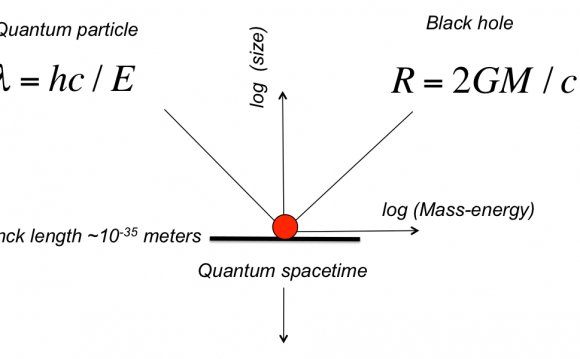
What if our 4D Universe (height, length, depth, and time) isn’t actually 4D? Enter the holographic principle—the craziest thing you’ll read about today.
The Universe we inhabit seems to be four-dimensional: the three dimensions of height, length, and depth, along with time. Together those are known as spacetime, which is the background of our successful theories describing the forces governing matter and the cosmos itself. Other models, such as string theory, propose more dimensions, but those are coiled up too small to be seen.
But there’s another idea: maybe one of the ordinary three dimensions of space is unnecessary for a full understanding of the Universe, with the “depth” information encoded in the other dimensions. Because the concept is similar to a hologram, the idea is known as the holographic principle, and it’s a hot topic among those trying to understand the quantum nature of gravity.
The holographic principle isn’t a theory that describes our Universe yet: it’s more a fascinating conjecture that might let us solve some thorny problems in fundamental physics someday. However, a few researchers think we might be able to detect some discrepancies between the three dimensions of space we perceive and a lower-dimensional hologram in the structure of spacetime on the very microscopic level.
Their experiment is known as the Holometer, located at Fermilab in Illinois. The Holometer is starting operations to detect hypothetical “holographic noise”: vibrations in the structure of spacetime caused by the encoding of the third dimension in the other two.
However, not everyone who studies the topic agrees on whether holographic noise exists or not, and failure to detect anything won’t tell us if the Universe is a hologram or not. To see why this is, though, we need to look more closely at the holographic principle.
An ordinary hologram is typically constructed by using lasers to scan three-dimensional objects, resulting in a picture that looks different depending on the angle of viewing. The third dimension is encoded in the viewing surface, tricking our eyes into seeing depth that isn’t there. The illusion isn’t perfect: nobody but Homer Simpson would be fooled into thinking the hologram of a donut was actually a donut.
The holographic principle is a slightly different matter. The idea derives from an interesting mathematical correspondence between two theories: a five-dimensional toy universe filled with a variation of dark energy, the stuff that makes our real Universe accelerate) and a four-dimensional toy universe with no gravity.
While neither of those models describes the real world, they show in principle that a lower-dimensional hologram could contain all the information of a more complex cosmos. And more importantly, the correspondence is exact: unlike a normal hologram, you wouldn’t be able to peek around the edge of the cosmic hologram to notice that it’s actually flat.
RELATED VIDEO











